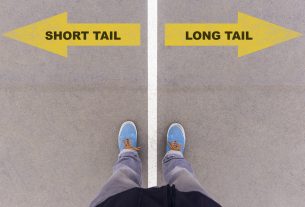On our roads, nobody wants lots of traffic. On the web, though, lots of traffic is welcome.
As a site owner or administrator, you know your site not only needs to attract traffic, but also be able to keep them there for longer. Unfortunately, this is rarely the case. 55 percent of internet users typically leave websites within 15 seconds.
If people are leaving your site as soon as they visit, you risk a high bounce rate and low time on page, which is bad for SEO. If it’s a business website, it means your sales will stay low.
The question you are probably asking right now is: why are they leaving?
We have answers for you, as well as solutions.
1. Your Site Isn’t Responsive or Mobile-Friendly
A decade or so ago, desktops where the primary devices people used to access the internet. Websites were built to be experienced on desktop screens.
But technology advances rapidly. Today, you can access the web from a range of devices, from a 2-inch smartwatch to a 5-inch smartphone, to an 11-inch tablet, to a 13.3-inch laptop, to a 75-inch smart television!
If your website is only designed for desktops, it won’t load properly on other devices. It might even not load at all, and the user won’t have any other option but to leave.
The fix?
Build a responsive website. It’ll adapt to various screen sizes, ensuring users get a uniform experience regardless of their devices. Another option is to build a stand-alone mobile website. This is especially ideal for very large sites.
Plus, responsive/mobile design improves a site’s search ranking.
2. Slow-Loading Websites
On the web, you have to impress, and the standards are quite high. For instance, internet users expect your website to load in, wait for it, 2 seconds. Those are two blinks of an eye!
Some website owners make the mistake of thinking a responsive or mobile-friendly site equals a fast site.
If you are one of them, you couldn’t be more wrong.
Yes, responsive or mobile design aids to site load times, but there are more factors that come into play. Your hosting provider, for instance, can affect load times, especially if it is hosting many sites on limited infrastructure.
Other elements that can slow down a website include:
- Large images and other pieces of content
- Vast traffic volume
- Too many plugins
There also other issues, like the visitor’s connection speed and PC cache, but there is little you can do about them.
However, you should firmly deal with issues under your control. Vet various hosting providers and settle on the most reliable and reputable. Optimize your images and videos before uploading to the site, and avoid using plugins that don’t enhance user experience.
3. An Awful Site Design
Ever visited a website and the first thing that caught your eye was its beauty? You must have felt welcomed, and the urge to explore other pages within the site only grew.
A beautiful design makes visitors stay longer, and even bookmark your site.
On the contrary, a bad design literally chases away visitors. We’re talking about a poorly crafted outlook, unattractive fonts, lack of whitespace, unclear navigation structure… you name them.
If your site hasn’t had a redesign in years or there is nothing spectacular about the current design, it’s high time you hired a professional to work on it. Be sure to familiarize yourself with design trends and build some of them into your new design.
4. Your Site Isn’t Secure
We’re living in the Information Age, but it’s quickly turning to the age of information theft. Indeed, hackers are having a field day on the web, so much that a small business website faces 44 hack attempts every day.
This is has prompted most internet users to beware of their own safety when browsing. They are always on the lookout for sites that look insecure and fishy, especially if the site requires their personal and financial details.
If your site isn’t secure, don’t expect the modern user to hang around.
But what’s an unsecure site? In technical terms, it’s one that doesn’t utilize HTTPS. Unlike HTTP, HTTPS enhances your site security, and internet users know this.
What’s more, major internet browsers are starting to flag websites that are still on HTTP. A “Not Secure” sign behind the URL bar is just enough to scare your site visitors away.
5. Ads, Ads on the Wall
One of the most popular perks of having a website is the ability to run ads and earn some ad revenue.
Is that your monetization strategy? Perfect.
However, are you guilty of displaying way too many ads? Just open one site page and count the number of ads you see. Anything more than two ads is too much. In fact, the modern internet user doesn’t want to see any ad at all, and when they do, they rarely click on them anyway.
We understand that running ads might be your only means to a livelihood, but you ought to pursue the strategy in moderation. Running too many of them at the same time will annoy most users. And if they won’t stay long enough to click on them, your revenues will decline. You lose on both fronts.
In addition to keeping the numbers of ads low, ensure they are relevant to your niche. This means if you run a gardening website, you have no business running auto repairs ads. Do that and your site risks coming off as spammy and untrustworthy.
6. Poor Content
Every second, millions of people go online to search for educative, informative and entertaining content.
For your website to thrive, it needs high-quality content users can easily and quickly engage with.
Unfortunately, even with the value of great content in mind, may website owners and administrators don’t put effort into producing valuable content. If you have a habit of publishing half-baked articles and poorly-shot images and videos, visitors won’t stay on your website.
You’re better off leaving your website without content than posting poor content on it. With no content, at least it will little incentive for users to pass judgment, so they’ll likely keep checking for updates. With poor content, visitors will know your site isn’t helpful to them, and they will make a mental note to never visit again.
7. Auto-Playing Videos
Videos are forecast to rule the internet. According to Cisco, they will account for 82 percent of all online traffic by 2021.
If you go wind of this stat and started giving more focus to video content, good move. But if some of those videos play automatically, it’s fair to say you’ve made one step forward, and two steps backward.
Internet users hate auto-play videos. It’s intrusive and comes off as a desperate move from the uploader. If your videos are high quality and well-described, it will naturally attract views.
Turns out the major internet browsers hate auto-play videos, too. Google Chrome and Microsoft Edge, for instance, no longer support auto-play videos with sound. And if these videos continue to be a bother, there is no doubt the browsers will disable them altogether.
8. Your Site Has Been Hacked Before
Even with HTTPS and other security features, hackers can still compromise your site.
While you can regain your site, you need to know that cyber attacks harm its reputation.
Therefore, if your site was recently hacked and many of your users got wind of the attack, they might be hesitant to spend time on it. They just aren’t sure whether it’s safe.
Getting up from a damaged reputation is usually a difficult task, but not out of your grasp. Besides installing enhanced security features, it helps to publish a note that lets visitors know the extent of the attack, as well as the steps you’re taking to enhance their safety.
9. You’re Not Using Exit Intent Technology
Ever been on a website, and when you are just about to close the tab, a pop up appears? Creepy, right?
Oftentimes you’re left wondering whether someone is monitoring your movement. The truth is you’re being tracked – just not by a human!
There are tools that monitor your mouse movement, and can detect when you’re about to bounce off. The tool will then take an action to make you stay, such as triggering a pop up offering some goodies.
Use such tools on your website, and ensure the pop is catchy and intentional.
That’s Why People Leave Websites
There are over 1 billion websites, all fighting for the attention of internet users. Sadly, these users are an impatient lot, ready to leave websites at the slightest provocation.
The good news is we have fleshed out some of the most common reasons people bounce off websites, and the steps you can take to make them stay. The ball is now firmly in your court.
Need more tips to improve your site’s user experience and SEO ranking? Explore our blog.



